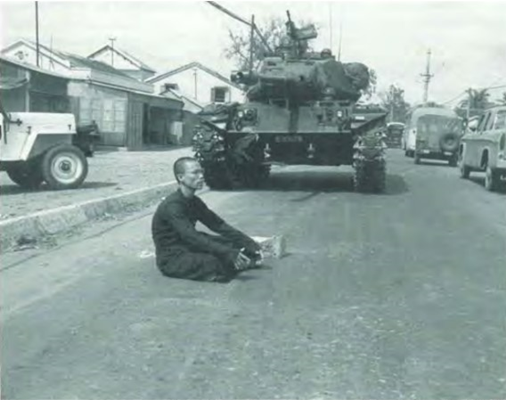Buddhist Crisis of 1966
March 10, 1966

South Vietnamese Premier Nguyen Cao Ky relieves General Nguyen Chanh Thi of his command of I Corps. Ky and others in the Saigon regime see the popular Thi as a political threat, but the move enrages South Vietnamese Army troops loyal to Thi and enflames smoldering resentment among several other groups in the region, especially Buddhist dissidents in Da Nang and Hue.
The resulting political and military crisis lasts for over two months. Groups of Buddhists and their supporters stage large protests in Da Nang and other towns. Most of the protests are anti-American in tone, and many protestors believe that the U.S. is conspiring to let South Vietnamese President Nguyen Van Thieu and Premier Ky maintain power and prevent elections for a new civilian government. A faction of South Vietnamese Army soldiers loyal to General Thi attack troops who remain loyal to Ky. MACV commander General William C. Westmoreland orders the U.S. Marines in I Corps to remain neutral but help maintain order. On multiple occasions, American Marines attempting to keep the peace receive fire from South Vietnamese troops. South Vietnam appears on the brink of civil war.
The crisis also creates consternation in the United States. The Johnson administration fears that the Saigon government remains weak and that the U.S. position in Vietnam is increasingly tenuous. Gallup polls in June find that 48 percent of interviewed Americans believe that sending troops to Vietnam has been a mistake, and some officials propose a withdrawal from South Vietnam, citing the crisis as representative of numerous deep-seated problems.
Premier Ky finally puts down the dissenters by force at the end of June, sending South Vietnamese marines to seize control of Buddhist and protestor-occupied buildings. The move quells the protests, and President Johnson declines to consider withdrawal.1